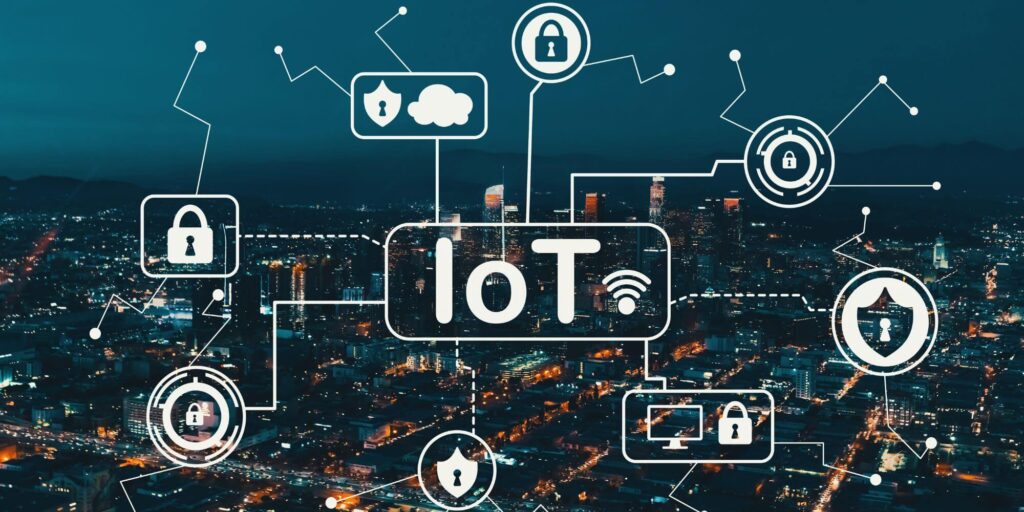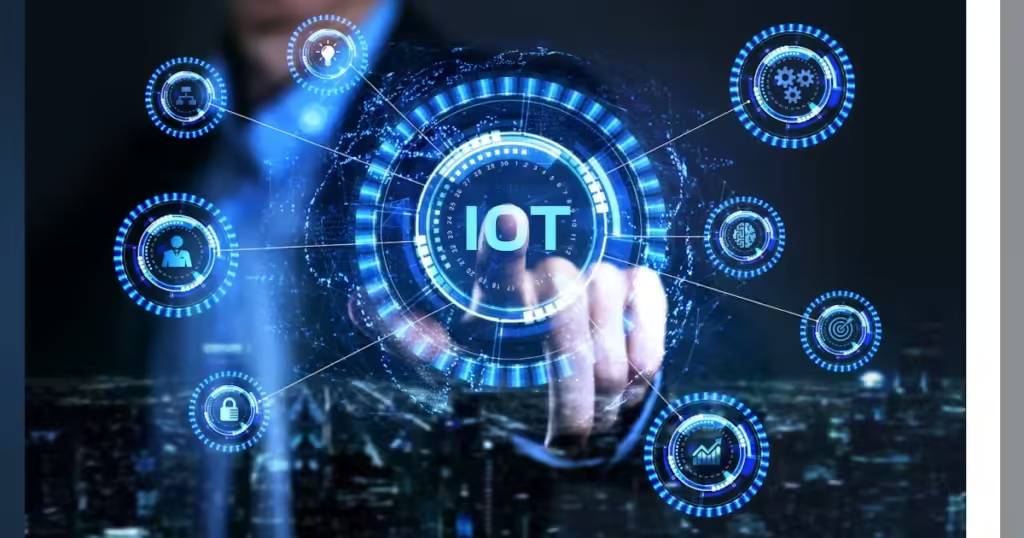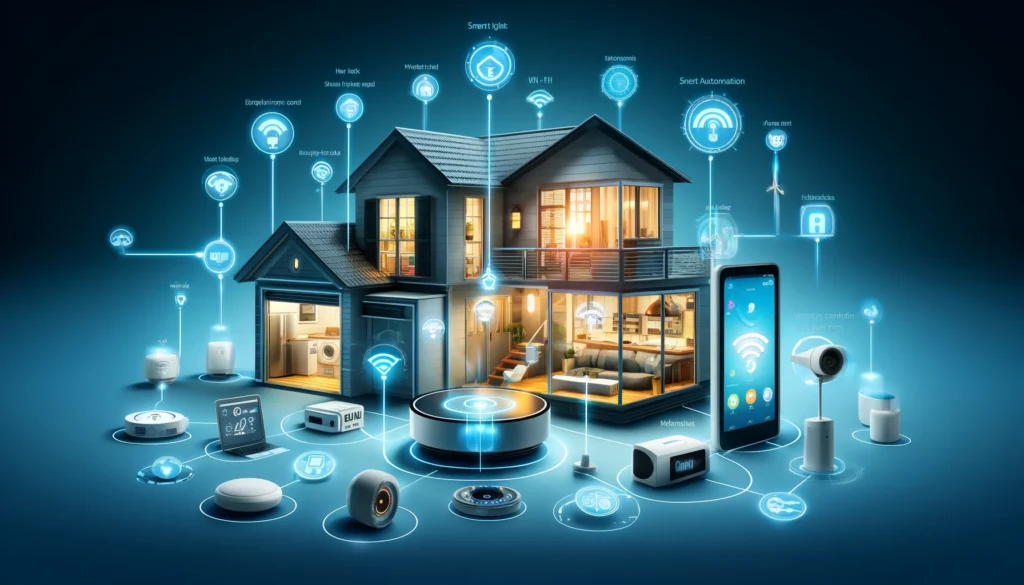As cities around the world continue to grow, managing urban infrastructure and services has become increasingly complex. From traffic congestion to energy consumption, public safety to waste management, the challenges of modern urban living are immense. However, the rise of the Internet of Things (IoT) is helping to revolutionize the way cities operate and interact with their inhabitants. IoT enables the connection of physical devices to the internet, allowing them to collect and exchange data in real time. This interconnectedness is the foundation of smart cities, which leverage IoT technologies to enhance the quality of life for their citizens, improve sustainability, and streamline urban management. In this blog, we will explore the role of IoT in smart cities, its benefits, challenges, and real-world applications.
What is IoT and How Does It Power Smart Cities?
The Internet of Things (IoT) refers to a network of devices, vehicles, buildings, and other objects that are embedded with sensors, software, and other technologies to collect and exchange data over the internet. These connected devices can communicate with each other, often without human intervention, to optimize processes and improve efficiencies.
In a smart city, IoT plays a pivotal role by connecting various systems and infrastructure components to a central data hub. Sensors and devices gather real-time information about different aspects of the city, such as traffic patterns, air quality, energy usage, waste management, and public safety. This data is then analyzed and used to make data-driven decisions that improve the functioning of the city, enhance citizen services, and create more sustainable urban environments.
1. Smarter Traffic and Transportation Systems
One of the most impactful applications of IoT in smart cities is in traffic management and transportation systems. As urban areas continue to experience rapid growth, traffic congestion becomes a major issue, contributing to pollution, longer commute times, and increased stress for residents. IoT can help alleviate these problems through smart traffic lights, sensors, and connected vehicles.
Smart traffic lights, powered by IoT, can adapt to traffic flow in real-time, reducing congestion and optimizing traffic movement. For example, sensors embedded in roads can detect vehicle volumes and adjust light patterns accordingly, ensuring smooth traffic flow and reducing waiting times. Additionally, IoT-enabled vehicles can communicate with traffic systems to alert drivers about congestion, accidents, or road closures, helping them avoid delays.
Public transportation systems also benefit from IoT, with real-time tracking and predictive analytics enabling better route planning, reduced delays, and enhanced commuter experiences. IoT can monitor the location and capacity of buses, trains, or trams, providing passengers with accurate arrival times and seat availability. This connectivity ensures a more efficient and reliable transportation network, making it easier for citizens to navigate the city.
2. Energy Efficiency and Smart Grids
With the growing demand for energy in urban environments, optimizing energy use is a key priority for cities around the world. IoT plays a crucial role in the creation of smart grids, which use connected sensors and devices to monitor and control the distribution of electricity in real-time.
In a smart city, IoT-enabled smart meters can track energy consumption at the household or building level. This data can be used to monitor energy usage patterns, detect wastage, and provide citizens with insights on how to reduce their carbon footprint. Additionally, IoT can enable dynamic pricing, where energy costs are adjusted based on demand and availability, encouraging users to consume energy during off-peak hours.
Smart grids also help with energy distribution, ensuring that power is delivered efficiently and sustainably. Sensors on power lines and transformers can detect faults, enabling quicker response times and reducing the risk of outages. In the long term, IoT-powered grids facilitate the integration of renewable energy sources, such as solar or wind power, into the grid by balancing supply and demand dynamically.
3. Waste Management and Sustainability
Effective waste management is a critical issue for rapidly growing urban areas. With IoT, smart cities can implement intelligent waste management systems that reduce costs, improve efficiency, and promote sustainability.
IoT-enabled trash bins with sensors can monitor waste levels in real-time, notifying waste management teams when bins are full and need to be emptied. This optimizes collection routes, reduces fuel consumption, and minimizes the number of unnecessary trips made by waste trucks. As a result, cities can streamline waste management operations, reduce traffic congestion, and cut down on greenhouse gas emissions.
Additionally, IoT helps track recycling efforts by monitoring the amount and types of waste being disposed of. This data can be used to educate citizens, optimize recycling programs, and develop policies aimed at reducing waste and encouraging sustainable practices.
4. Enhancing Public Safety
Public safety is a top priority for any city, and IoT plays a vital role in enhancing security and emergency response systems. Connected surveillance cameras, environmental sensors, and smart infrastructure can help authorities monitor and respond to incidents in real-time.

For example, IoT-enabled surveillance systems can detect unusual activity, such as crowds gathering in unauthorized areas, or recognize security threats, such as unattended bags or vehicles in public spaces. These systems can instantly alert law enforcement, enabling faster response times and potentially preventing criminal activity.
IoT is also transforming emergency services. In the event of a fire, for example, IoT sensors in buildings can detect smoke and automatically notify fire departments, providing them with real-time information on the fire’s location and severity. In healthcare, connected medical devices can provide real-time health data to hospitals and paramedics, improving response times and patient outcomes.
5. Environmental Monitoring and Air Quality
Air pollution and environmental degradation are significant concerns in urban areas, and IoT can help address these challenges through continuous environmental monitoring. IoT sensors can be deployed across the city to measure air quality, noise pollution, temperature, humidity, and other environmental factors in real-time.
This data can be analyzed to identify pollution hotspots, track changes in air quality, and trigger actions to improve environmental conditions. For instance, if air quality deteriorates in a certain area, IoT systems can alert citizens, adjust traffic flow to reduce emissions, or activate air purifiers in public spaces.
Environmental data collected through IoT can also be used to inform urban planning decisions, ensuring that future developments are environmentally friendly and sustainable.
Challenges of Implementing IoT in Smart Cities
While the potential of IoT in smart cities is immense, there are several challenges to overcome. One of the primary obstacles is data privacy and security. With so many interconnected devices collecting vast amounts of personal data, protecting citizens’ privacy and securing the data from cyberattacks is essential.
Moreover, the cost of implementing IoT infrastructure can be significant, particularly in cities with limited budgets. Governments need to allocate resources effectively to ensure that IoT projects are both financially viable and scalable.
Finally, there is a need for interoperability among different IoT devices and systems. For IoT to truly enhance smart cities, devices from different manufacturers must work together seamlessly, sharing data and providing a cohesive experience for citizens.

Conclusion
The Internet of Things (IoT) is transforming the way cities function, creating smarter, more efficient, and more sustainable urban environments. From smart traffic management to energy optimization, waste management to public safety, IoT is improving the quality of life for citizens and enhancing the overall functionality of urban spaces. As more cities around the world adopt IoT technologies, the future of urban living looks brighter, with interconnected solutions that address the pressing challenges of modern cities.
However, for smart cities to reach their full potential, it is crucial for governments, businesses, and citizens to collaborate, ensuring that IoT infrastructure is implemented responsibly, securely, and sustainably. With the right investments and strategies, IoT can pave the way for a more sustainable and efficient future for cities worldwide.

